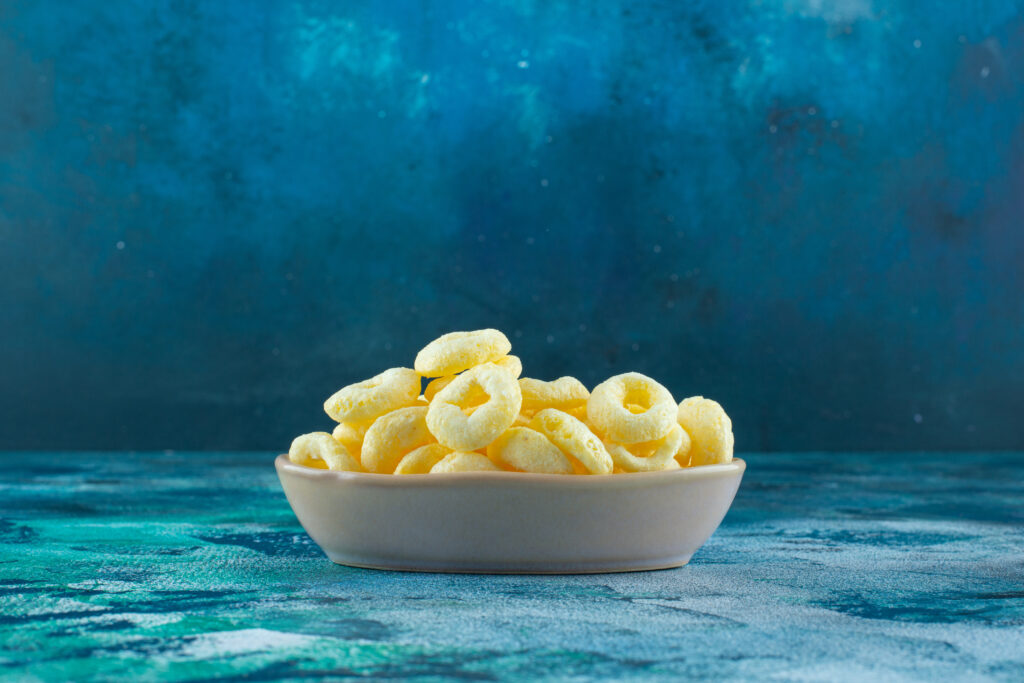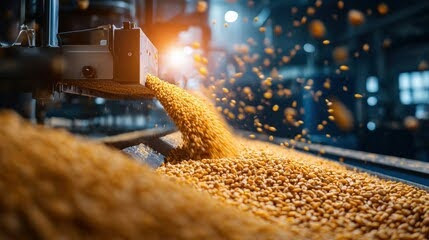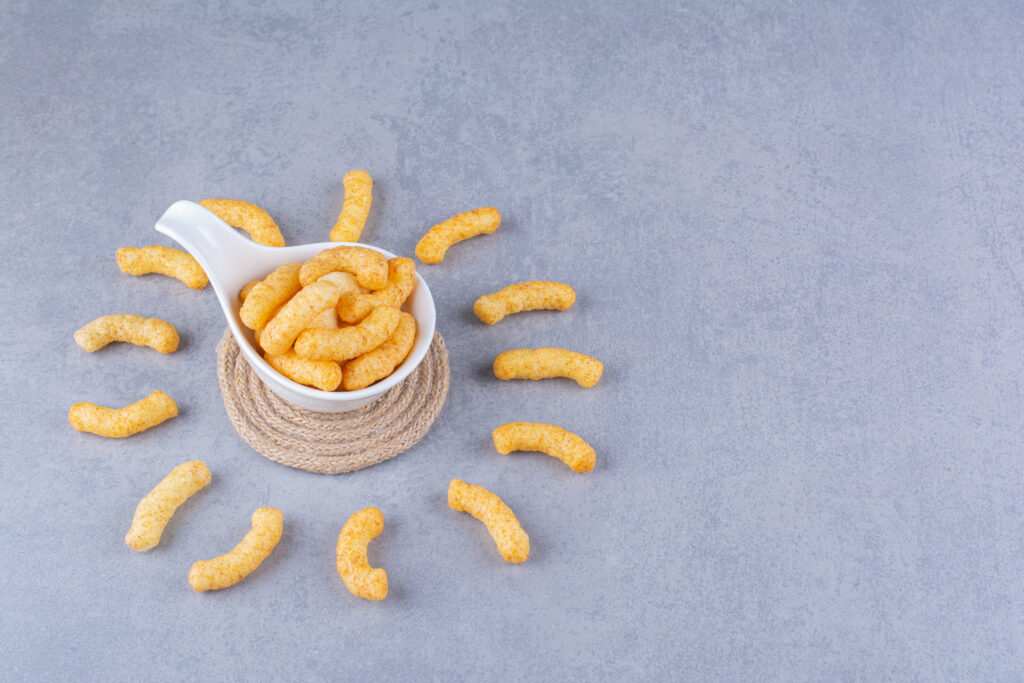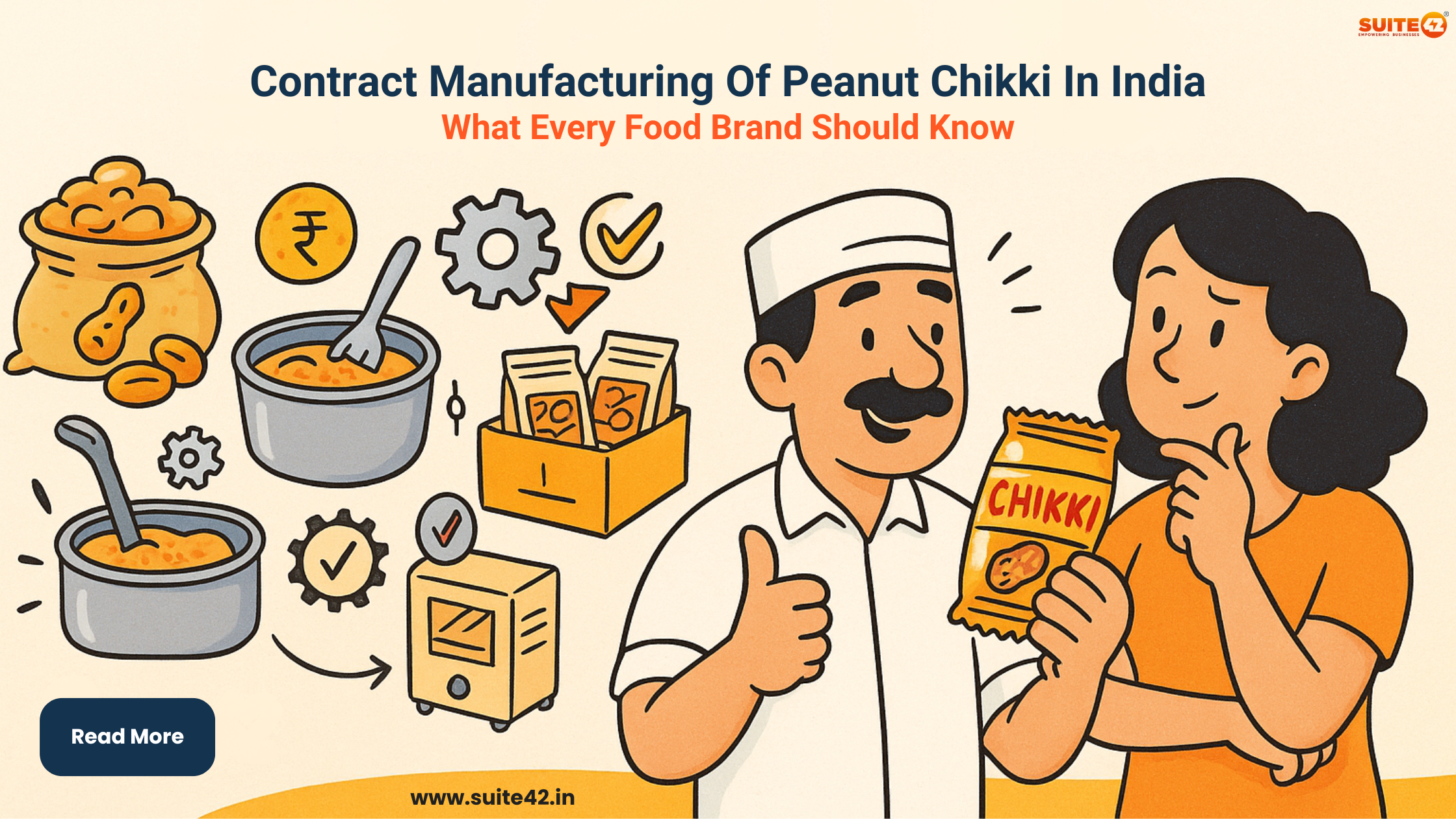
Co-Extruded Snacks: The Next Frontier in Product Innovation
Introduction
In a saturated snacking market, filled snack formats have carved out a space that combines indulgence, novelty, and functional opportunity. From creamy cheese cores in crispy shells to dual-texture chocolate-fused puffs, snacks allows brands to engineer surprise and sensory contrast in a single bite. This dual-fill snack production technology is no longer confined to premium confectionery. It is becoming a commercial frontier for F&B brands seeking to differentiate on taste, format, and purpose.
Co-extruded snacks are now emerging as a highly scalable solution for both indulgent and health-driven segments. For innovation-focused snack founders and R&D teams, mastering this format offers a first-mover advantage, but it also demands deep formulation control, compatible equipment, and manufacturing partners with precise co-extrusion capabilities.
A resource worth checking out – What Are Extruded Snacks? A Complete Guide for Modern Food Brands
What Are Co-Extruded Snacks and Why Are They Trending Now?
Understanding the Dual-Layered Snack Format
Co-extrusion refers to the process of simultaneously forming an outer shell and an inner core during extrusion. Unlike traditional single-layer snacks, co-extruded formats incorporate two distinct materials, typically a crunchy base and a soft or semi-liquid center, through synchronized feeding and die design. The result is a snack that delivers flavor in layers, often combining crunch, creaminess, or chewiness in a controlled ratio.
Technically, the outer matrix must expand without rupturing while the inner filling maintains viscosity and thermal integrity. This makes ingredient compatibility and real-time feed control critical.
Why Filled Snacks Are Resonating with Modern Consumers
The demand for sensory variety in snacking has intensified. Co-extruded products answer this by offering surprise, a flavor or texture shift that elevates the eating experience. Cheese-filled corn rings, choco-fused oat puffs, and nut butter-infused multigrain bites are all proof of the format’s growing appeal and innovative snack manufacturing.
It’s not just indulgence. These filled snacks allow brands to embed function inside fun. A consumer may choose a protein-filled, crunchy bite for post-gym snacking or a fruit-filled cereal snack for satiety during work hours. This versatility is driving co-extrusion into both urban retail and global snacking categories.
Global Trends Fuelling Demand for Co-Extruded Innovation

Indulgence Meets Convenience in Bite-Sized Formats
One of the key reasons these snacks are scaling globally is their ability to balance luxury and portability. Due to food innovation in India and worldwide, consumers are seeking flavor-forward experiences that also suit fast-paced lifestyles. Small, packable formats with filled cores meet both cravings and convenience.
Multinational brands are tapping into innovative snack manufacturing to create bite-sized filled snack products to meet demand in categories like school snacks, mini-meals, and on-the-go fitness fuel. In the Indian market, there’s rising interest in masala-coated shells with tangy or creamy fillings, tailored to the spice-loving palate.
Functional Formats: Filling Snacks with Protein, Adaptogens, and More
The co-extruded format offers the ability to deliver functionality without affecting surface texture. From peanut butter cores for protein enrichment to adaptogen-infused chocolate centers for stress relief, this format supports clean, targeted nutrition without disrupting taste.
Filled snack development for functional applications requires careful thermal calibration to preserve bioactive compounds inside the core. Suite42’s pilot teams work with brands to develop fortified core formulations that can retain efficacy through the extrusion cycle and shelf life.
Product Possibilities with Co-Extrusion Technology
Savory-Filled Extrusions: Cheese, Chutney, and Spice Cores
In the Indian context, co-extruded savory snacks are showing strong pull. Cheese-filled maize rings and tomato chutney-filled sticks offer a balance of familiarity and surprise. This dual-fill snack production technology resonates in both retail and institutional segments, especially in northern and western India, where spicy fillings outperform neutral ones.
Customization of shell thickness, spice dispersion, and filling viscosity determines not just taste but also moisture migration and crunch sustainability.
Sweet Formats: Chocolate, Caramel, and Jam-Filled Cores
For indulgent formats, co-extruded-based snacks can house high-viscosity fillings like chocolate hazelnut, caramel, or berry jams. These appeal to both school-age demographics and adult premium snacking audiences. Shells are often made from lightly sweetened rice or oat bases to balance sweetness and enable expansion.
These products must be packaged in high-barrier films to avoid flavor leaching and preserve creaminess over shelf life.
Functional Formats: Fortified Centers with Nutraceutical Focus
Modern co-extrusion lines allow for encapsulated active ingredients, such as plant protein blends, energy boosters, or cognitive support nutrients, to be embedded within the core. These products are gaining traction in the nutraceutical snacking category, where taste remains a barrier to entry.
Precise flow control, encapsulation technology, and stability trials ensure that these cores not only survive processing but also deliver measurable benefit post-consumption.
R&D Considerations for Successful Co-Extruded Product Development
Matching Core and Shell: Texture, Viscosity, and Process Compatibility
Creating a balanced filled snack requires more than selecting great flavors. It involves aligning the physical properties of the shell and core to function together under extrusion stress. The shell must expand evenly and form a solid barrier, while the filling must maintain flowability without bleeding, melting, or destabilizing the outer matrix.
Common issues include:
- Core materials liquefying at high temperatures and leaking
- Shells under-expanding or bursting due to excessive internal pressure
- Oil migration from the core affects crunch and taste integrity
To solve this, Suite42 uses pre-screened ingredient systems, synchronized screw feed controls, and predictive formulation software to calibrate core-to-shell ratios, moisture management, and line temperatures.
Suite42’s Pilot-Stage Formulation and Trial Line Expertise
Before moving into scaled production, Suite42 supports brands with small-batch co-extrusion trials. These test batches assess viscosity, fill volume control, seal integrity, and product handling during and after extrusion.
Pilot data includes:
- Optimal core-shell temperature differential
- Moisture loss index across process stages
- Adhesion and release behavior under packaging stress
Scaling Production of Filled Snacks

How Co-Extrusion Lines Differ from Standard Equipment
Standard extrusion lines are typically single-screw or twin-screw systems feeding one homogenous matrix. In contrast, co-extrusion lines feature dual-barrel configurations with separate feeders for shell and core, plus specialized dies that allow simultaneous forming and filling.
Key differentiators:
- Double-screw core feed pumps for controlled viscosity
- Real-time monitoring of core-shell thickness
- Cooling zones that stabilize the filled product post-extrusion
Precise control of these parameters allows manufacturers to maintain product consistency at scale, which is critical for filled snacks prone to leaking or structural failure.
Check out our Categories: Snacks/Savouries
Suite42’s Manufacturing Network for Co-Extruded Production
Suite42 co-extrusion services are fulfilled by partnering with certified manufacturers across India that are equipped with co-extrusion capabilities, including dual-fill lines, nitrogen flushing stations, and viscosity-controlled feeders. Brands gain access to lines capable of producing cheese-filled sticks, fruit-core cereals, and even protein-fortified snack tubes.
Whether a brand needs 2,000 pilot pouches or a 5-ton commercial run, We provide scale-appropriate production without compromising innovation integrity through our food contract manufacturing services.
Packaging & Shelf-Life Challenges in Filled Snack Formats
Barrier Needs and Shelf-Life Control
Filled snacks face unique packaging challenges. Any oxygen ingress, oil migration, or moisture gain can lead to sogginess, separation, or off-flavors. Barrier films with multilayer laminate structures, along with inert gas flushing during sealing, are often required to maintain product freshness.
In some cases, secondary packaging or cold-chain logistics may be necessary, especially for dairy-based fillings or heat-sensitive nutraceuticals.
Suite42 evaluates these factors during the pilot phase and customizes packaging formats that match shelf-life goals, target temperature ranges, and shipping constraints.
Labeling Compliance and Ingredient Transparency
Filled snacks must declare ingredients for both the shell and the filling, which often includes complex blends. This requires expanded label panels and precise weight-based declarations.
Label claims must also align with formulation, for example, a “cheese-filled” snack must meet minimum cheese solid content thresholds as per FSSAI standards. For exports, claims must be adapted for US, GCC, or EU compliance frameworks.
Suite42 supports brands with compliant label development, nutritional panel formatting, and regulatory submissions.
Branding and Positioning: Dual-Filled Snacks as Premium or Functional

Avoiding Gimmickry in Product Storytelling
To succeed in this category, brands must avoid positioning filled snacks as novelties. Instead, the narrative must emphasize texture innovation, nutritional benefit, or flavor architecture.
Packaging design, ingredient callouts, and portion sizes all contribute to perceived value. A cheese-filled ring can be marketed as a rich indulgence or as a low-sodium, calcium-rich school snack, depending on positioning.
Examples of How Leading Brands Are Positioning Filled Snacks
Without naming them, several international brands have launched high-protein puffs with nut butter cores, fruity co-extrusions for meal-replacement markets, and low-GI filled snacks for diabetic consumers. These brands lead with function and back it with texture and taste, a blueprint many Indian and APAC snack brands are now emulating.
Let Suite42 Bring Your Co-Extruded Snack Vision to Life

Why Innovation-Led Brands Partner with Suite42
Launching a co-extruded snack line involves high formulation complexity, specialized machinery, and rigorous testing. Suite42 supports brands with an end-to-end system, from dual-fill R&D and pilot batches to full-scale production and compliance.
Whether the goal is a gourmet nut butter snack or a fortified school product, Suite42 offers the ecosystem to make it viable, scalable, and commercially successful.
Book a Call and Begin Your Co-Extruded Innovation Journey
Suite42’s co-extrusion program helps founders and product teams fast-track their ideas from concept to market. Brands ready to explore this category can schedule a product strategy call to align on feasibility, pilot plans, and manufacturing timelines. Contact us today to get started.






Leave a Reply